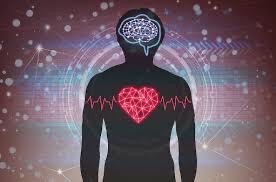Heart vs Mind – Intuition vs Intelligence

Thank You to Sharon Jessee, one of our students at The Yoga Place, for contributing her thoughts and notes on this discussion that I was unable to facilitate. One of the reasons I love the discussion format is because students as well as teachers have thoughts and reactions to “The Yoga Sutras of Patanjali” that are all valid, and insights come from all aspects and levels of practice! Please join us on the first Sundays of the Month in 2022 for further discussions.
Our most recent Yoga Sutras Discussion Group was held on Sun., Feb. 6 and was facilitated by Chris Saudek in Jennie’s absence. At the start of the discussion, Chris discussed the chakras, informed by her notes on Prashant Iyengar’s (the son of BKS Iyengar still living and teaching in Pune, India) presentations on them. The central point in working with the chakras is to realize that they reveal, depending on each individual, “why you are the way you are.” How you work with your chakras, to calm down or to heat up their nodes/locations in the body and the organs and functions related to each of them – how healthy your chakras are – determines your tendencies to some extent. The balance or imbalance of the chakras can ultimately lead to all of our different personalities – anger, ambition, creativity, abstraction; all are affected by our personal states of the chakras.
For example, Chris noted, the lowest chakra, at the tailbone area (Muladhara – root chakra) can be in a positive state, which is serenity and wisdom; or in a negative state, which is lethargy, dormancy.
The second chakra (Svadhisthana – sacral chakra) corresponds to the sex organs and relates to sexuality and sensuality; we can be more animalistic, or less so depending on this chakra’s balance.
The 3rd (Manipura – navel chakra) refers to self esteem and is reflected in the workings of the gut – in fear or confidence. In its strength or positive state, we follow our survival instincts, but negatively, with too much fear we can’t operate, it is stultifying.
The 4th (Anahata – heart chakra) refers to truth in emotion—women are supposedly more under the influence of this heart chakra than men in recollection of Prashant’s discussion.
The 5th (Vishuddha – throat chakra) refers to thought management and self expression. Tense thoughts = tense throat. We know our thoughts are “silent speech”.
The 6th (Ajna – third eye) is reflected in the brows and between the eyebrows. It refers to intuition and consciousness and “order”. We can look at our volition through the third eye – “Things are easier done than said”.
As always, the open discussion on the specific sutras we covered that day (III.33-35) was very lively and sharp with lots of contributors! The “effulgent” light cited in III. 33 reflects our highest level of evolution. This word in particular really impacted me – a beautiful word which indicates movement and flow, as well as fullness. The bulk of the open discussion was tied to III.34 and the concept of “Intuition”. A couple of people noted specific times in their lives (middle age) when their true intuition, distinguished from mere impulses, seemed to really become prominent and could be accessed. Also, intuition and the mind/intelligence can be counter-balances to each other.
Many participants commented on various and wide-ranging experiences with these “mixed-emotions” of head and heart. Chris told a story herself about experiencing one of Guruji’s sharp observations: she took several students with her to Pune one year and after Mr. Iyengar observed their practice, he turned to Chris and stated, “I see you lead them more with your head than with your heart.” Can we tell the difference? When are we making decisions or acting solely from the head or the heart? Where is that balance?
There was also discussion around the meaning of “esoteric” versus “material” (or actual) experience. Being in the moment is important, otherwise we are burdened by the past and/or attracted to a future that has yet to happen. The present is our “actual experience”, while the past and future are only “esoteric”.
The above discussion concluded the “yogic powers” listed in Chapter three of “The Yoga Sutras of Patanjali” that surround integration (samyama) with the varying chakras. In the next blog, Jennie will be back to highlight the next three sutras for discussion on March 6th. Stay tuned!